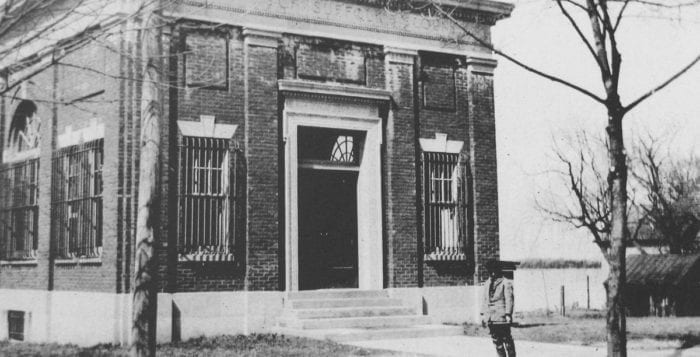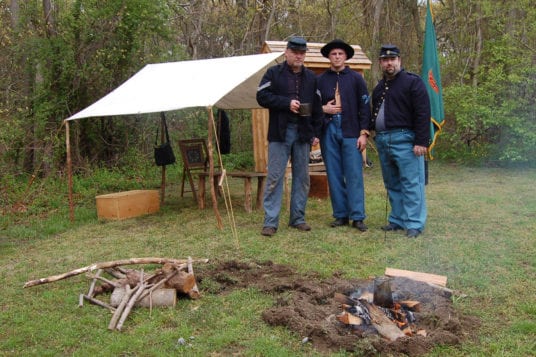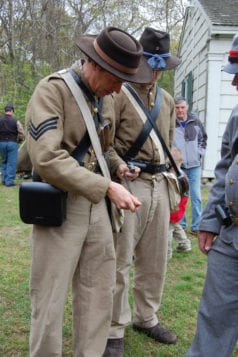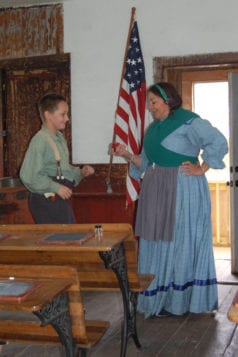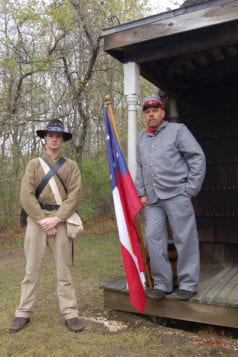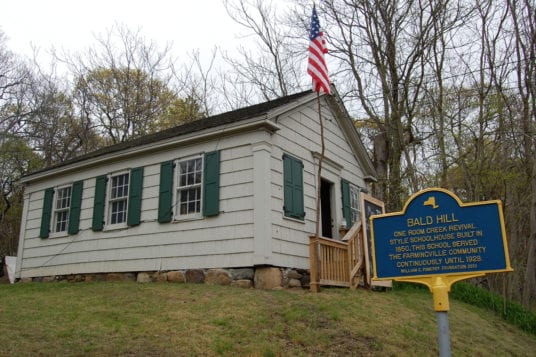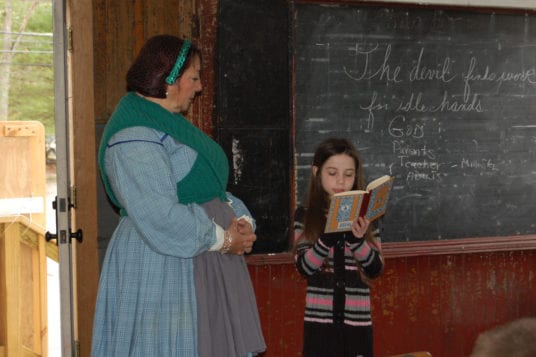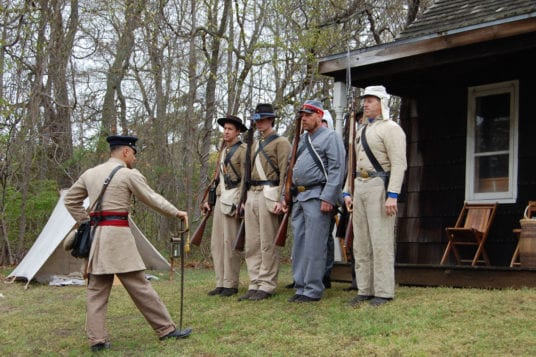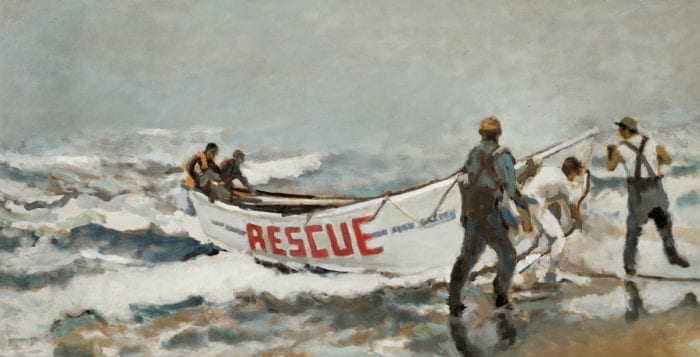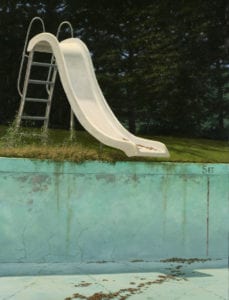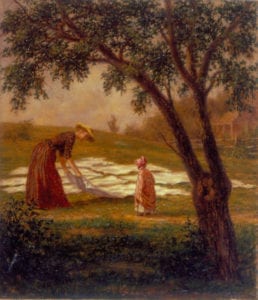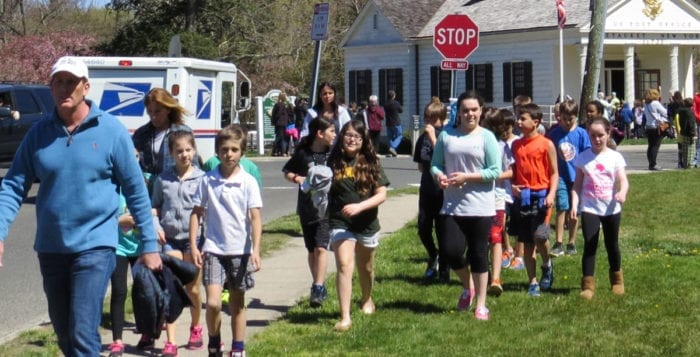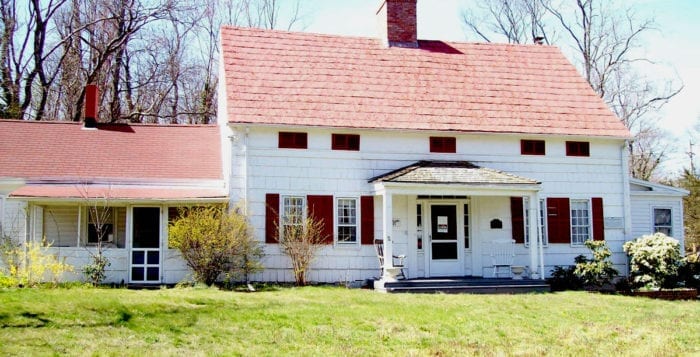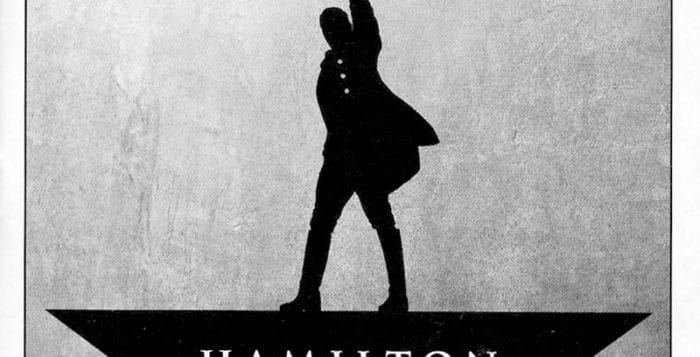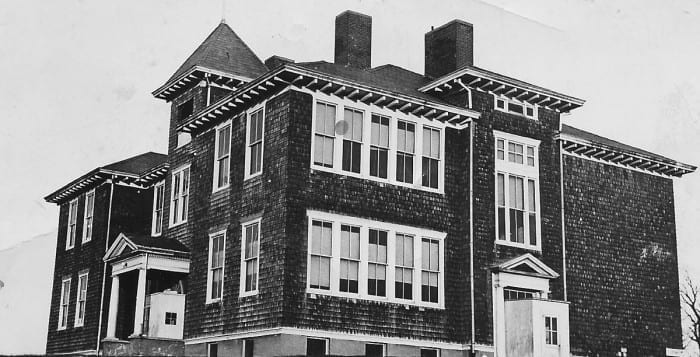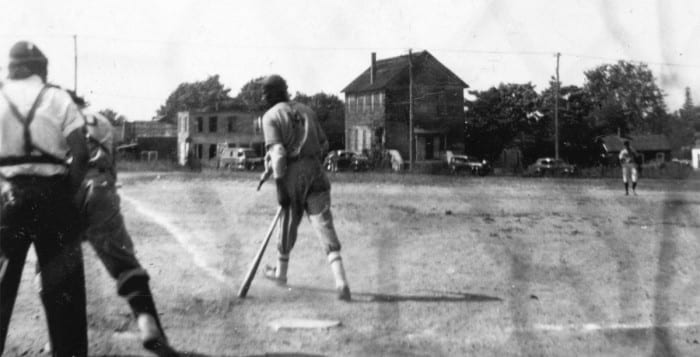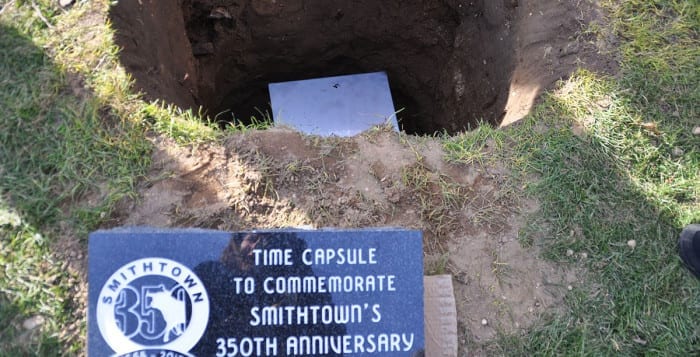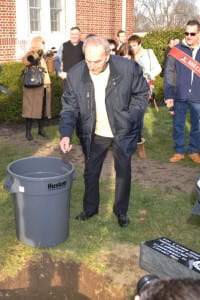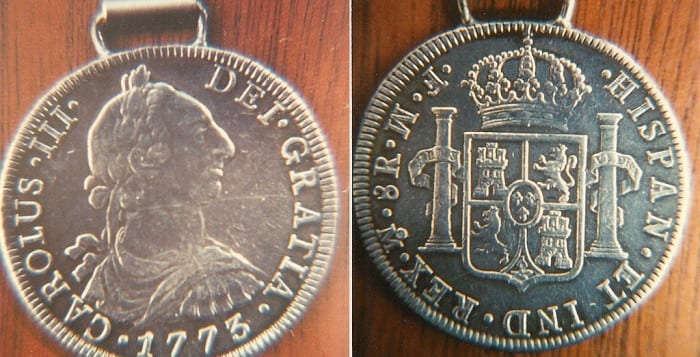By Beverly C. Tyler
When Ward Melville began his plan to construct, in Stony Brook, a compact Federal-style shopping center, there were stores and shops spread out along Main Street, Shore Road, now Dock Road, and Christian Avenue. Main Street in Stony Brook during the 19th and early part of the 20th century was an active commercial area with a variety of shops. South of Grist Mill Road and the mill pond there were a number of small homesteads and farms, a harness maker’s shop and a blacksmith shop, and a schoolhouse. The business area really began at the Grist Mill and pond, and except for Jacinsky’s Saloon and a bakery opposite Grist Mill Road, all the stores were on the west side of the road between the pond and the harbor. Shops included an ice cream parlor, drug store, hardware store, tea room, secondhand clothing store, Chinese laundry, a tailor shop and harness maker’s shop that became a butcher shop and grocery store about 1900, a barber shop, livery stable, shoemaker’s shop, post office and at least two general stores.
The butcher in Stony Brook at the turn of the century was Orlando G. Smith. His brother, Charles E. Smith, ran a butcher shop and general store in East Setauket. Orlando took over the butcher business from Bennie Wells who died in 1875. In 1898, Orlando built a new shop on the site of an earlier butcher shop run by George Hawkins. According to Percy Smith, in his booklet A Century of Progress, “In the mid-90s — 1890s — farmers around Stony Brook began decreasing the sales of their livestock, and Orlando Smith was forced to find another source of supply. The closest place was Bridgeport, about 15 miles across sound, but Smith encountered many difficulties obtaining meat from even so short a distance. His order had to go to Bridgeport by mail. The meat was then hauled to the Bridgeport docks and shipped by boat to Port Jefferson. There it was loaded into a wagon and brought to Stony Brook. During this time, Orlando bought what meat he could, but this had dwindled mostly to calves, lambs and pigs.
Orlando Smith’s butcher shop was located south of where the Reboli Center, formerly the Bank of Suffolk County, Extebank and others, is now. In 1913, Percy Smith took over the butcher business after it had been owned for less than a year by Captain Robert F. Wells and then by Percy’s father, W.H. Smith. In 1922, Percy moved to a new location in the old post office building, which was located a few lots north of the present Reboli Center, on the site of Gould’s General Store.
The Bank of Suffolk County began its operation in 1907 in a building at the south corner of the old business triangle, which is now part of the village green. The building, featuring a shingled, mansard roof, was owned by the Odd Fellows and contained a drug store and soda fountain, a library, lodge and dance hall. The bank moved to its present location in 1912 and its original building was torn down as part of the rehabilitation of the Stony Brook Shopping Center in 1941.
When the bank moved, it occupied a location, which was formerly owned by Dan Sherry, who ran a livery stable before the turn of the century. Just north of Sherry’s was the home and general store of J.N. Gould. Gould’s home later became the home of Doctor Squires. North of Gould’s home was the general store and the home of Edward Oaks. Oaks, in 1873, was a “dealer in dry goods, groceries and other supplies.” According to Percy Smith, Oaks’ general store (later Topping’s general store) was the “better” general store in town.
“It had everything,” commented Percy, “bales of hay, kerosene, hardware, patent medicine, food and clothing.”
Beverly Tyler is the Three Village Historical Society historian and author of books available from the Three Village Historical Society.

